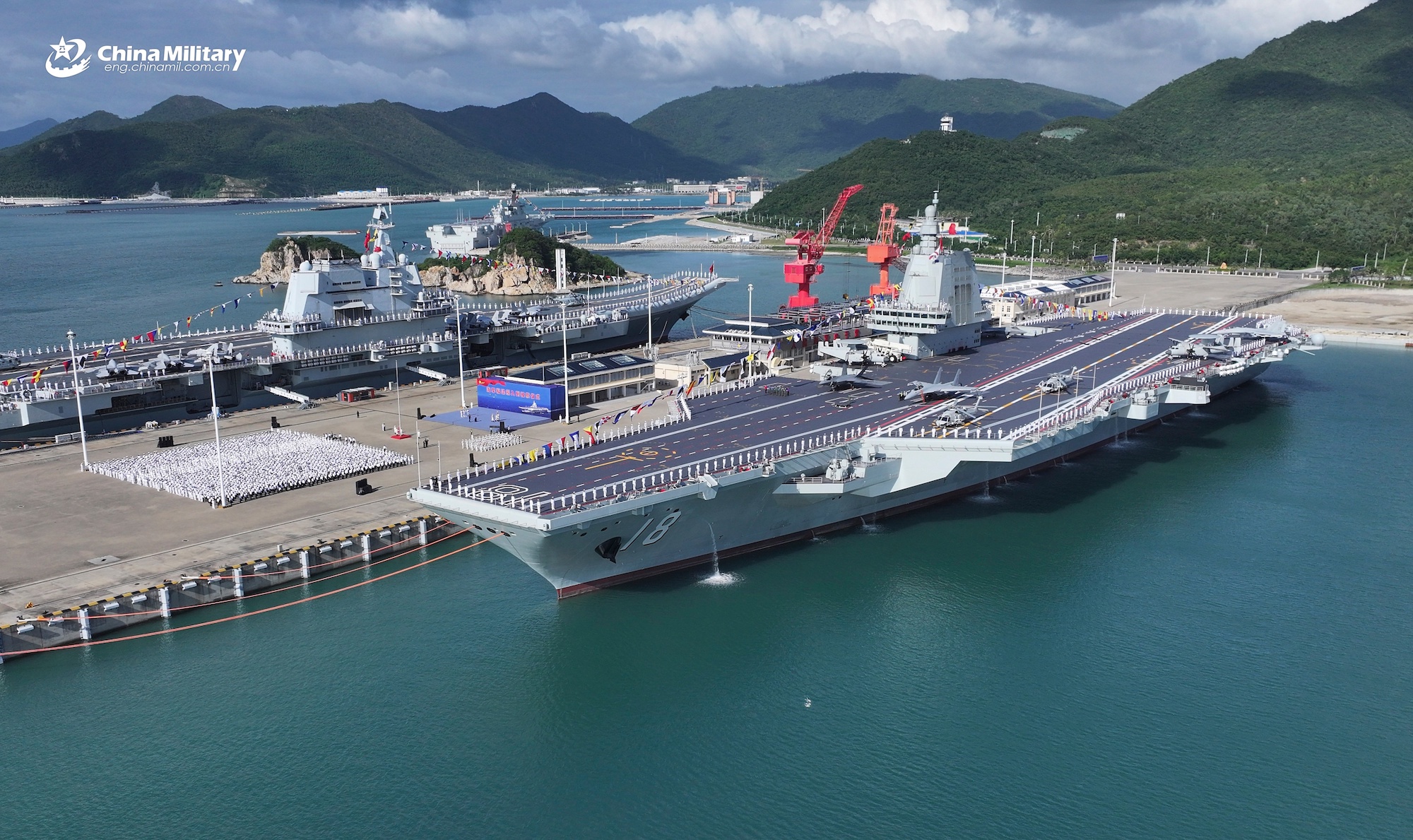Three-Aircraft Carrier Era For China
CHINA has officially entered the three-aircraft carrier era with the commissioning of its third and latest Fujian carrier equipped with electromagnetic catapults. The commissioning ceremony of China’s largest warship was attended by President Xi Jinping in Hainan Province’s Sanya, the Xinhua News Agency reported. Xi, also general secretary of the Communist Party of China Central Committee and chairman of the Central Military Commission then boarded the carrier to inspect the vessel.
Top brass from the People’s Liberation Army Navy (PLAN) and institutions involved in the construction of the aircraft carrier were also in attendance with many of the country’s new-generation carrier-based aircraft, fifth-generation J-35 stealth fighter, J-15T heavy fighter, KJ-600 airborne early warning and control (AEW&C) aircraft and Z-20F helicopter parked on the flight deck.
Dubbed the Type 003, the Fujian is the first PLAN carrier that is equipped with electromagnetic catapult-assisted takeoff but arrested recovery (CATOBAR) system. It is the only non-United States Navy ship to be fitted with the electromagnetic catapult, with the USS Gerald R. Ford being the first to feature the electromagnetic aircraft launch system (EMALS). China’s Navy is now the world’s largest navy in terms of sheer tonnage.
The PLAN’s first two aircraft carriers, Liaoning and Shandong are of a ski-jump short takeoff but assisted recovery (STOBAR) configuration with the 80,000-tonne Fujian being the first of an entirely different design, closer to the American style flattop though all three are conventionally-powered. The Shandong was also commissioned in Sanya, with speculations that both the Shandong and Fujian could operate from the same home port which faces the South China Sea.
Just before September ended, footage released by the PLAN and social media showed the Fujian carrying out deck operations, launching and recovering their array of indigenously developed aircraft. A feat described as “another breakthrough in the development of China’s aircraft carriers and a milestone in promoting the naval transformation and construction.” These aircraft, along with the J-15DT carrier-borne electronic warfare aircraft were also featured in China’s Victory Day military parade held in Beijing on September 3.
The PLAN said the Fujian will “continue to carry out in-depth testing to further assess the stability of the platform system. Meanwhile, it will carry out carrier-aircraft adaptation, formation system training, and other tasks as planned to continuously enhance its combat capabilities.”
Furthermore the PLAN added that “China’s development and improvement of weapons and equipment are not targeted at any country or specific goal, nor will they pose a threat to any country or region. They are solely aimed at safeguarding national sovereignty, security and development interests. As for the future development plan for China’s aircraft carriers, it will be comprehensively considered based on national defence needs.”
In a speech recently, US President Donald Trump stated his intention to sign an executive order which would see the US Navy revert back to steam-powered catapults and hydraulic elevators as the Gerald Ford’s catapults and elevators have been facing reliability and maintenance issues.–-shp/adj/dl (Pix:MND)


